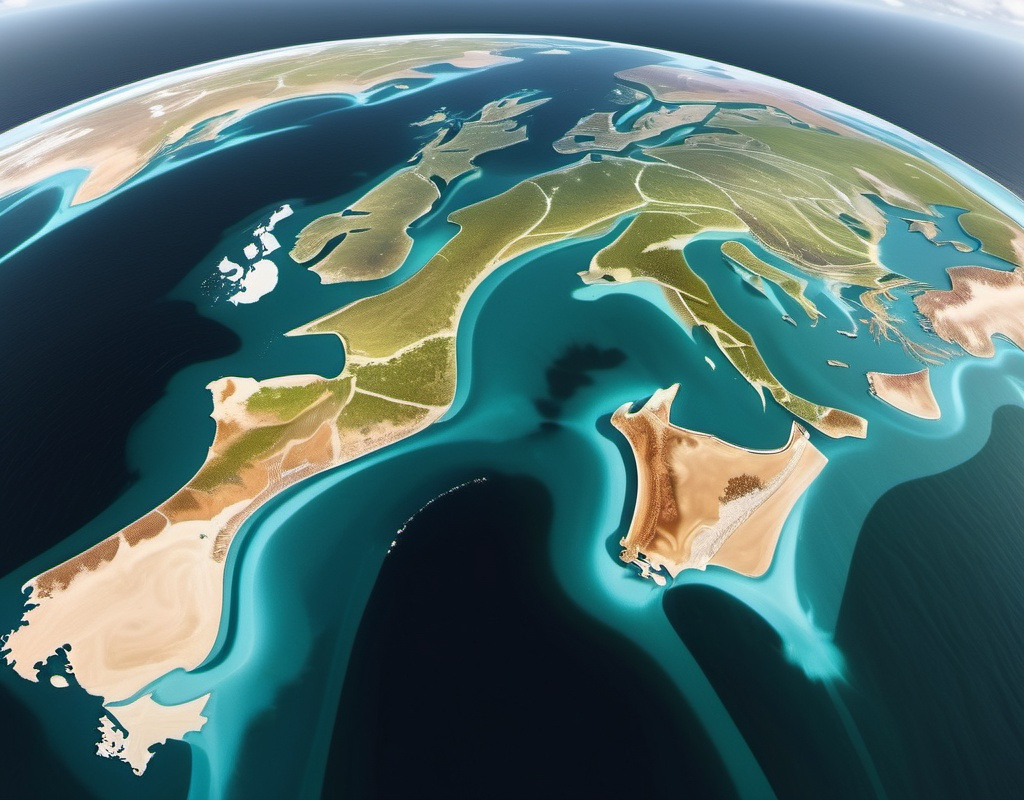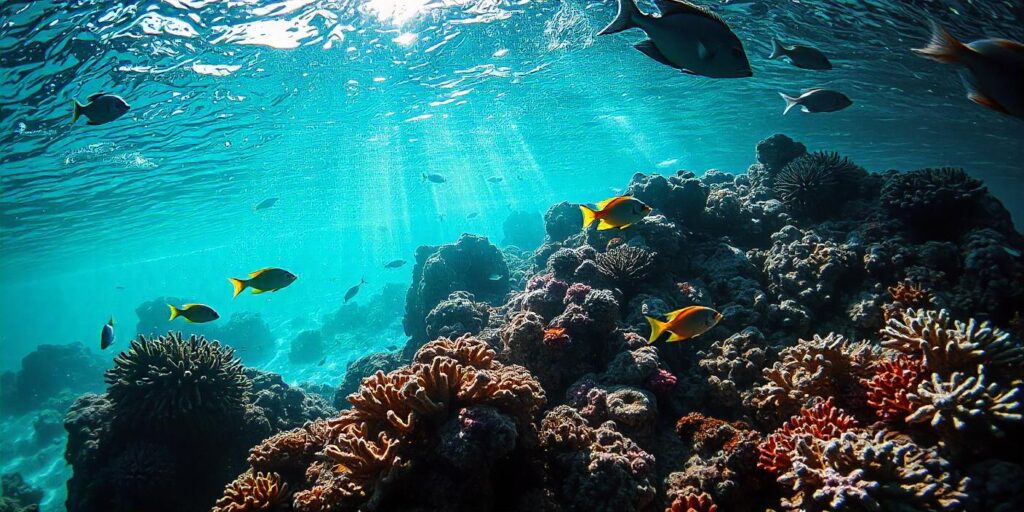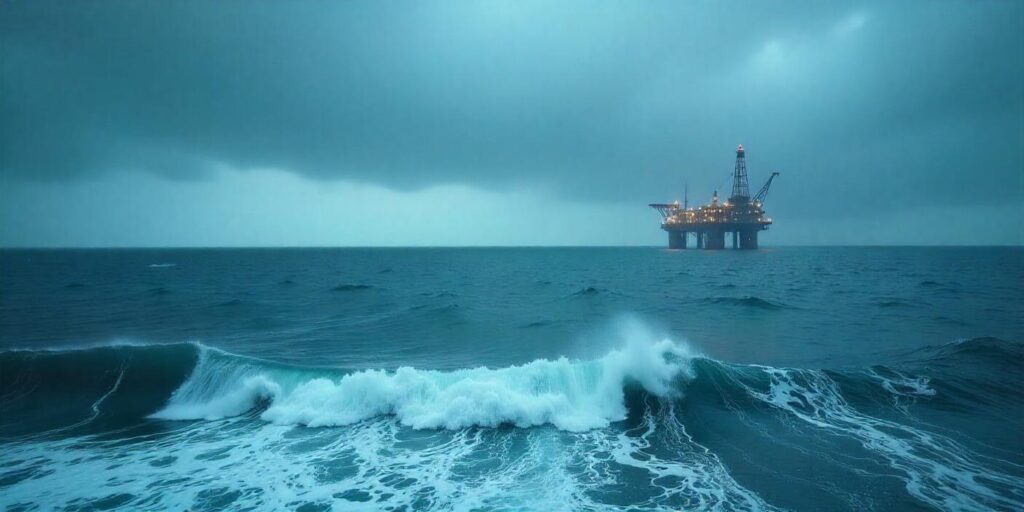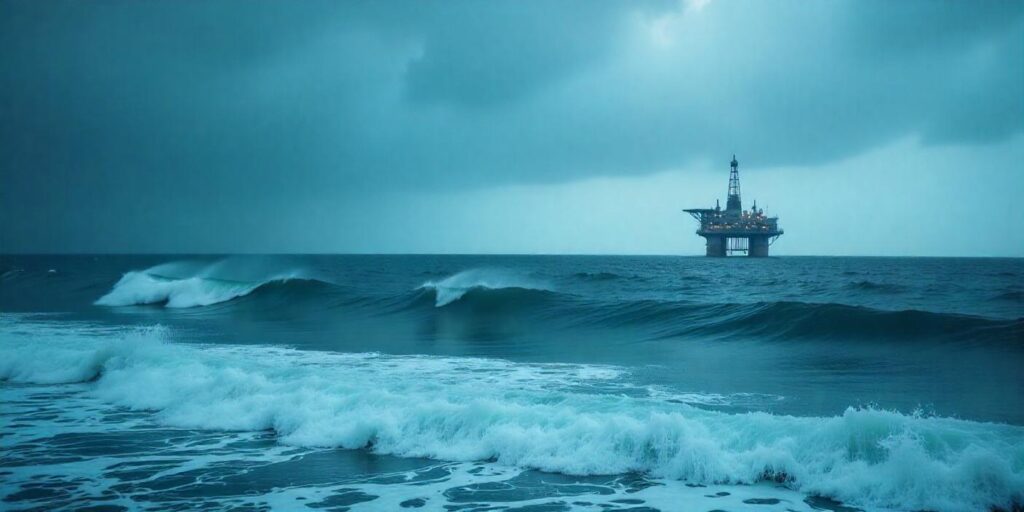North Sea a critical body of water in Northern Europe, and the world’s oceans, which cover over 70% of our planet, are integral to Earth’s climate, biodiversity, and human activities. This blog delves into the geographical significance, ecological importance, economic value, and the challenges faced by these waters.

The North Sea An Overview
Geography and Location
The sea is roughly 750 kilometers (470 miles) long and 500 kilometers (310 miles) wide.
Historical Significance
Historically, the North Sea has been a crucial maritime route for trade and exploration. It was central to the Viking voyages during the early medieval period and has been a significant area for European maritime trade since the Middle Ages.
Climate and Weather Patterns
Due to its location, it is subject to variable weather conditions, including frequent storms and fog, which impact navigation and marine activities.
Ecological Significance of the North Sea

Marine Life and Biodiversity
The North Sea is home to a diverse range of marine species, including fish, mammals, and seabirds. Key species include the North Sea cod, herring, and the endangered North Atlantic right whale. The sea also supports vital breeding grounds for many fish species.
Ecosystems and Habitats
The North Sea features several critical ecosystems, including seagrass beds, salt marshes, and coral reefs. These habitats support a rich variety of life and are essential for maintaining the ecological balance of the region.
Conservation Efforts
Various conservation initiatives are in place to protect the North Sea’s marine environment. Organizations like the North Sea Commission and various EU directives aim to address issues such as overfishing, pollution, and habitat destruction.
Economic Importance of the North Sea
Fishing Industry
The North Sea has long been an important fishing ground, supporting commercial fisheries for species like cod, haddock, and sole. However, overfishing has led to declines in fish stocks, prompting efforts to manage and sustain fisheries.

Oil and Gas Reserves
The North Sea is one of the world’s major oil and gas producing regions. The discovery of North Sea oil in the 1960s led to a significant boost in energy resources for the surrounding countries, particularly the UK and Norway.
Shipping and Trade
The North Sea is a vital shipping route connecting the Baltic Sea to the Atlantic Ocean. Major ports such as Rotterdam, Hamburg, and Antwerp are located along its shores, making it a crucial artery for international trade.
North Sea Environmental Challenges and Issues
Pollution
Pollution is a significant issue in the North Sea, with contaminants such as oil spills, plastic debris, and agricultural runoff affecting water quality and marine life. Efforts are ongoing to reduce pollution through international agreements and local regulations.
Climate Change
Climate change poses a threat to the North Sea through rising sea levels, increased storm intensity, and changes in marine biodiversity. These impacts have implications for coastal communities, ecosystems, and fisheries.
Overfishing
Overfishing has led to the depletion of several fish stocks in the North Sea. Sustainable fishing practices and quotas are essential to ensure the long-term health of marine populations.
The World’s Oceans: A Global Perspective
Overview of the Oceans
The Earth’s oceans are divided into five major bodies: the Pacific Ocean, Atlantic Ocean, Indian Ocean, Southern Ocean, and Arctic Ocean. Each ocean plays a unique role in the planet’s climate, weather patterns, and biodiversity.

The Pacific Ocean
It is known for its extensive coral reefs, the Mariana Trench, and significant climatic influences such as El Niño.
The Atlantic Ocean
The Atlantic Ocean, the second-largest ocean, is known for its role in historical exploration and trade. It features the Mid-Atlantic Ridge and is crucial for transatlantic shipping and weather patterns.
The Indian Ocean
The Indian Ocean is the warmest of the world’s oceans and is vital for its monsoon weather systems and rich biodiversity. It includes important maritime routes connecting Asia, Africa, and Australia.
The Southern Ocean
The Southern Ocean encircles Antarctica and is characterized by its cold waters and unique marine life, including krill and penguins. It plays a crucial role in global climate regulation through the Antarctic Circumpolar Current.
The Arctic Ocean
The Arctic Ocean is the smallest and shallowest of the major oceans, covered by sea ice for much of the year. It is experiencing significant changes due to global warming, impacting local ecosystems and global climate.
Ecological and Economic Importance of the Oceans

Marine Biodiversity
The world’s oceans are home to an astonishing diversity of life, from the smallest plankton to the largest whales. Coral reefs, mangroves, and deep-sea vents are among the most productive and vital ecosystems.
Climate Regulation
Oceans play a critical role in regulating the Earth’s climate by absorbing carbon dioxide and distributing heat through ocean currents. This process affects global weather patterns and climate stability.
Human Activities
The Atlantic Ocean
The Atlantic Ocean, the second-largest ocean, is known for its role in historical exploration and trade. It features the Mid-Atlantic Ridge and is crucial for transatlantic shipping and weather patterns.
The Indian Ocean
The Indian Ocean is the warmest of the world’s oceans and is vital for its monsoon weather systems and rich biodiversity. It includes important maritime routes connecting Asia, Africa, and Australia.
The Southern Ocean
The Southern Ocean encircles Antarctica and is characterized by its cold waters and unique marine life, including krill and penguins. It plays a crucial role in global climate regulation through the Antarctic Circumpolar Current.
The Arctic Ocean
The Arctic Ocean is the smallest and shallowest of the major oceans, covered by sea ice for much of the year. It is experiencing significant changes due to global warming, impacting local ecosystems and global climate.
North Sea Environmental Challenges Facing the Oceans
Plastic Pollution
Plastic pollution is a major threat to marine life, with millions of tons of plastic entering the oceans each year. This pollution affects wildlife, marine ecosystems, and human health.
Ocean Acidification
Ocean acidification, caused by increased CO2 absorption, threatens coral reefs and shellfish by reducing the availability of calcium carbonate. This process impacts marine biodiversity and ecosystem services.
Overfishing
Overfishing is depleting fish stocks and disrupting marine ecosystems. Sustainable fishing practices and marine protected areas are essential to address this issue.
Climate Change
Climate change affects ocean temperatures, sea levels, and ice coverage. These changes impact marine species, ecosystems, and coastal communities, necessitating global efforts to mitigate climate impacts.
Conclusion
The North Sea and the world’s oceans are vital to our planet’s health and human prosperity. Understanding their significance, addressing environmental challenges, and fostering sustainable practices are crucial for ensuring the long-term vitality of these essential waters. By prioritizing conservation and responsible management, we can protect these invaluable resources for future generations.
Survival Stories from the Dead Sea
1. The Exodus Wanderers
The Story
The Dead Sea area has been a significant location in various historical and religious texts. One notable survival story is linked to the biblical Exodus. According to tradition, during the exodus from Egypt, the Israelites wandered through the desert, and some of them faced extreme challenges near the Dead Sea region. The harsh conditions, including intense heat and lack of water, tested their endurance.
Survival Tactics
To survive, the wanderers relied on their resourcefulness. They used any available natural resources, such as brine from the Dead Sea to help with dehydration, despite its extreme salinity. Historical accounts also suggest they sought shelter in the region’s caves and wadi systems to escape the sun and conserve energy.
2. The 1960s Dead Sea Expedition
The Story
In the early 1960s, an expedition led by the British explorer and archaeologist, John Marco Allegro, set out to explore the Dead Sea region. The team faced significant challenges due to the extreme heat and salinity of the environment. Allegro and his team were researching the ancient ruins and scrolls found in the nearby Qumran Caves.
Survival Tactics
The team had to take extensive precautions to avoid dehydration and heat exhaustion. They carried large amounts of water, wore protective clothing to shield themselves from the sun, and utilized local knowledge about the safest paths and places to rest. The team’s ability to adapt and their preparation were key to their successful exploration.
3. The 2016 Israeli Hiker Incident
The Story
In 2016, an Israeli hiker named Daniel Tadmor became stranded in the area surrounding the Dead Sea. Tadmor was hiking alone when he lost his way and ended up in an inhospitable part of the desert. With no immediate help available, his survival depended on his quick thinking and resourcefulness.
Survival Tactics
Tadmor used his knowledge of the desert environment to find shelter in the shade of rock formations. He rationed his limited water supply and used the reflective properties of the Dead Sea’s salt to signal for help. After several days of isolation, he was eventually rescued by a search team. His survival was attributed to his careful management of resources and his ability to stay calm under pressure.
4. The Jordanian Military Training Exercise
The Story
In 2018, a group of Jordanian soldiers participating in a survival training exercise near the Dead Sea found themselves in a dire situation when their supplies ran out unexpectedly. The exercise, designed to simulate real-life survival conditions, turned into a true test of endurance.
Survival Tactics
The soldiers employed a range of survival techniques, including creating makeshift shelters from available materials, using the salinity of the Dead Sea to make brine for survival, and navigating using natural landmarks. The exercise was a valuable learning experience, demonstrating the importance of adaptability and preparation in extreme conditions.
5. The 2020 Israeli Family’s Struggle
The Story
In early 2020, an Israeli family on a day trip to the Dead Sea found themselves in trouble when their vehicle became stuck in the mudflats. The family was unprepared for the sudden onset of a sandstorm that made their situation worse.
Survival Tactics
The family used the car’s emergency supplies, such as first aid kits and additional water, to manage the situation. They also used the vehicle for shelter against the sandstorm and followed emergency protocols to signal for rescue. They stayed calm and rationed their resources carefully until help arrived.
Conclusion
Survival stories from the Dead Sea highlight the extreme conditions and the resilience required to navigate them. Whether through historical accounts, modern expeditions, or unexpected emergencies, these stories underscore the importance of preparation, resourcefulness, and adaptability. The harsh environment of the Dead Sea, with its high salinity, intense heat, and remote location, continues to challenge those who encounter it, making every survival story a testament to human endurance and ingenuity.
These survival stories illustrate the unique challenges posed by the Dead Sea environment and the remarkable strategies employed by individuals to overcome them.
